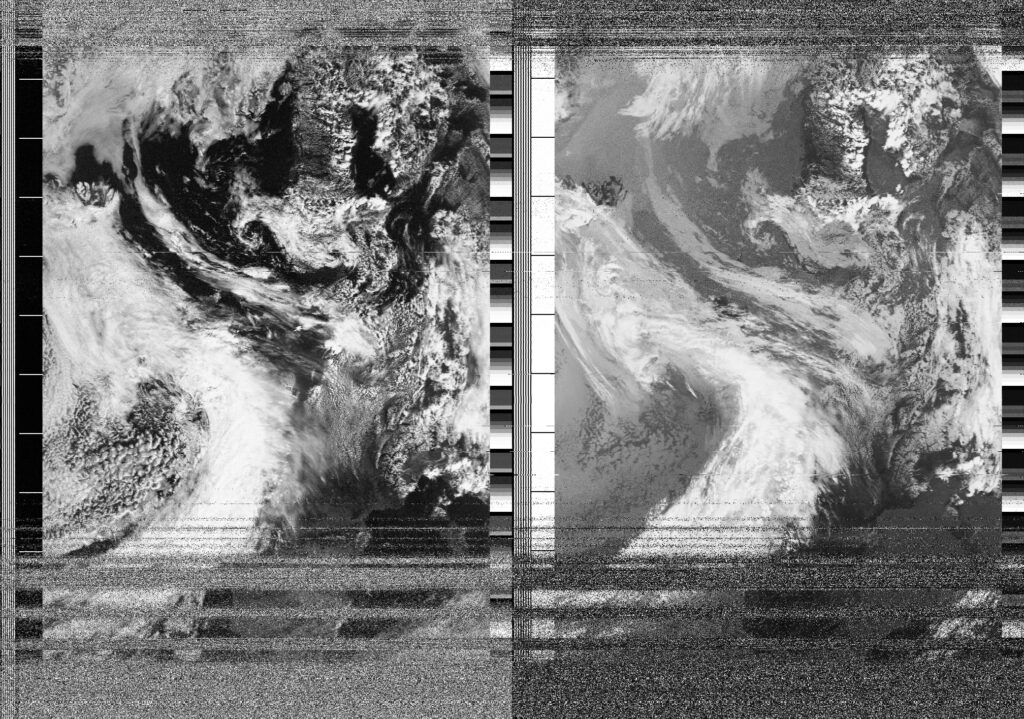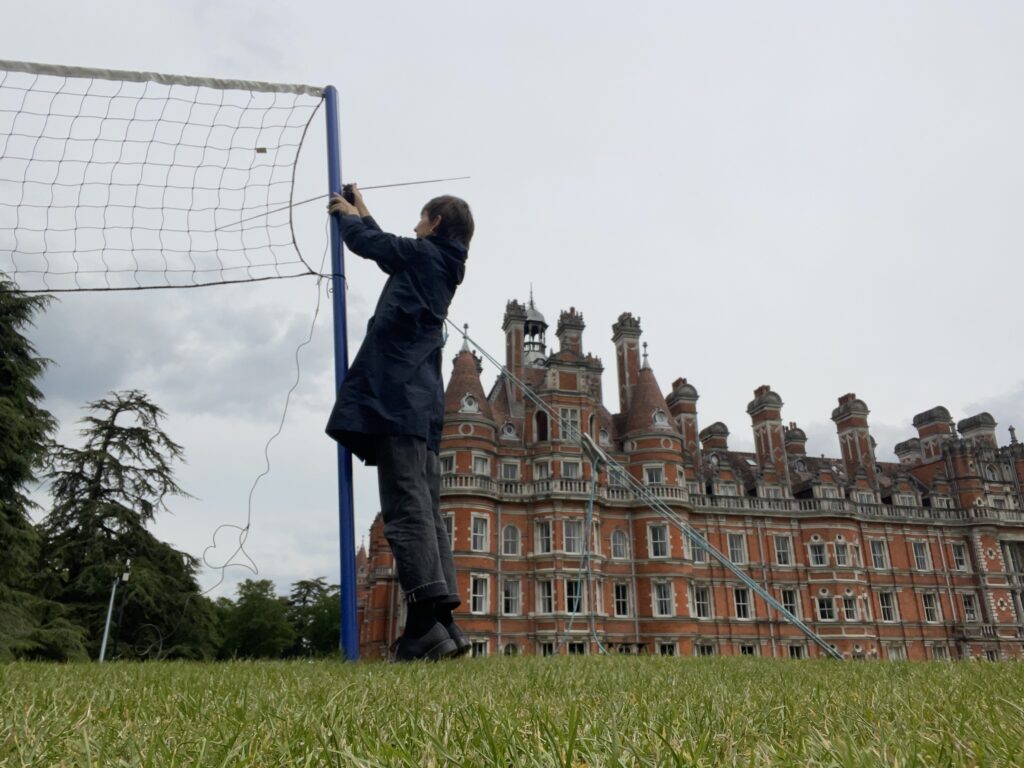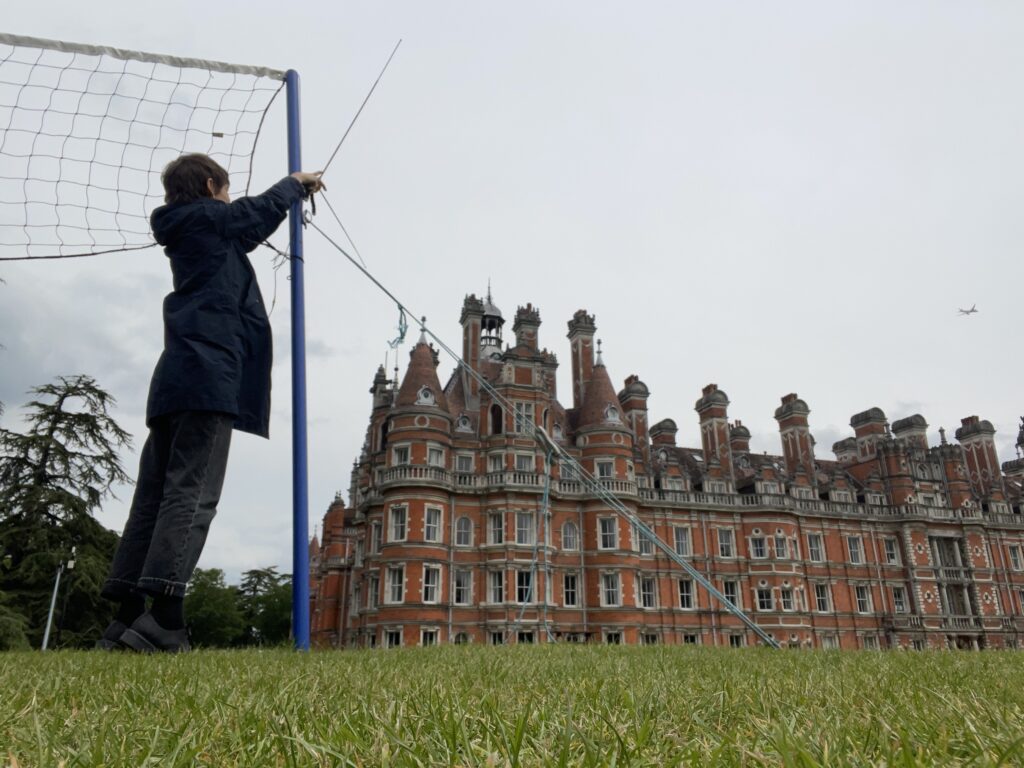Local Date
13 June 2024Local Time
12:25Location
Founder's Field, Royal Holloway University of LondonCountry or Territory
United KingdomContributor
Sasha EngelmannSatellite
NOAA-18Radio Callsign
Archive ID
Coordinates
On the train to the university campus this morning, I think: what might it mean to ‘queer’ air, and our relations to it? Several scholars I read and admire have recently gestured to air’s queerness. Nerea Calvillo writes about queering as a practice that is useful when we consider airborne things like pollen. Nerea writes, “Because if air is commonly pictured as an inanimate (and often toxic) gaseous entity, queering it brings to the fore the whole world of animate and invisible entities that are part of it” (2023: 240). Queering air “brings desire, multispecies reproduction and interactions, excess, and ambiguity” to the fore (2023: 241). Nerea thus figures queering air as a tactic of honouring air’s multiplicity and deviancy.
Talkign about multiplicity: later in the day I am standing on tiptoes attaching an antenna to a football post while an airplane approaches Heathrow airport, flying very low over the university campus, and appearing in the corner of one of the documentation images. Minutes later, I am listening to the Russian satellite Meteor MN2-3 drown-out the weaker signal of NOAA-18. The electromagnetic trace of the Russian satellite is clearly visible in the gradations of static in the Southern portion of the image I capture from NOAA. Even later, I am “close reading close breathing” the work of poet Julianna Spahr, cited in the writing of queer theorist Lauren Berlant (2022: 101). An excerpt from Spahr’s poem ‘This connection of everyone with lungs’ goes as follows:
as everyone with lungs breathes the space between the hands and
the space around the hands and the space of the room and the
space of the building that surrounds the room and the space of
the neighbourhoods nearby and the space of the cities in and out
Earlier this week I cited Stephen Connor’s writing on the ‘spaces of observation’ created by scientists to treat air as an object, as a volume that could be controlled. Spahr’s poem offers a very different diagram of air to space, and I would argue this is a queer one. The word ‘air’ is never mentioned in the poem, yet ‘breathes the space’ arises several times. Air is an anterior, a semi-nothingness that nevertheless infrastructures lungs and spaces. Though the poem intersects scales from the space around the hand to the space of neighbourhoods and cities nearby, it doesn’t do so by ‘nesting’ scales in the way we often see in popular media and culture, where the ‘body’ is placed in the ‘local’ and this sits inside the ‘urban’. Instead, reading the poem (that spans several pages) is an interstitial experience where breath is hinged to space and space is in turn hinged to different and plural scales, from the intimate to the planetary. This is an "affective scene [that] focuses on receiving and metabolizing the world while unraveling its presumed solidity" (Berlant, 2022: 97). This is perhaps a "queer reboot of the common" (Berlant, 2022: 99) that comes about through the queering of air.



